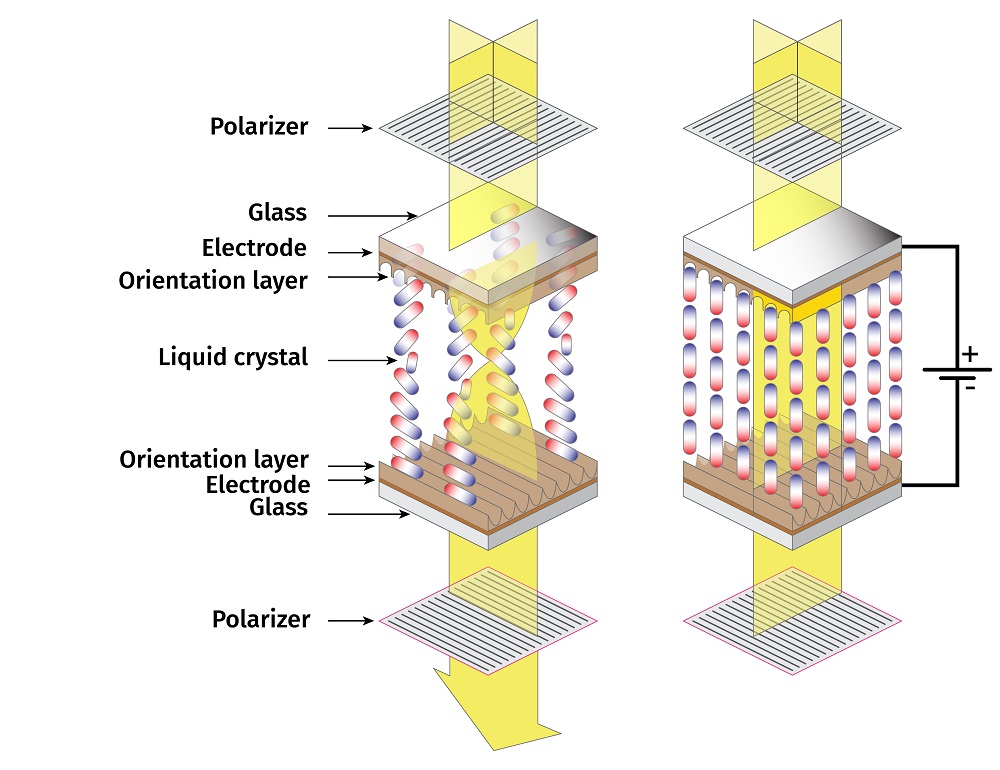
How does a liquid crystal display (LCD) work?
17.06.2025 | Author: Ralf Helfenstein | Reading time: 5 minutes
LCD stands for "Liquid Crystal Display." In today’s world, LCDs are ubiquitous – found in smartphones, computers, televisions, and everyday items like calculators and refrigerators.
But how exactly do LCDs work? In this blog post, we take a closer look at their basic functionality.
Liquid Crystals
Liquid crystals are the core of LCDs and give the technology its name. Unlike most other substances, which transition from a solid state with ordered molecules directly into a disordered liquid state when heated (e.g., snowflake → raindrop), liquid crystals maintain a certain degree of molecular order over a wide temperature range (e.g., -40°C to +90°C) when they reach the "liquid-crystalline" state.
How Is an LCD Structured?
A basic LCD cell works as follows:
Backlight:
Light from the backlight (usually LEDs) first hits the first of two polarization filters.
Polarization Filter 1:
You can think of a polarization filter as a grid. When unpolarized light hits the filter, only light aligned in one specific orientation or plane can pass through.
Glass Layers with Electrodes and Alignment Layers:
Between the two glass layers – which contain the electrodes and alignment layers – is a cavity filled with liquid crystal. On the alignment layers, the rod-shaped liquid crystal molecules align horizontally, forming a helical structure that rotates the orientation of the light by 90°. When a voltage is applied to the electrodes, the molecules realign vertically, and the light returns to its original orientation.
Polarization Filter 2:
Depending on the orientation of the light, it may or may not pass through the second polarizer.
Conclusion
In an LCD, we can change the orientation of polarized light by applying a voltage. Simply put, an LCD is an electronic light switch.
Want more?
If you're more on the visual side, check out the amazing explanation video from Posy on Youtube:


